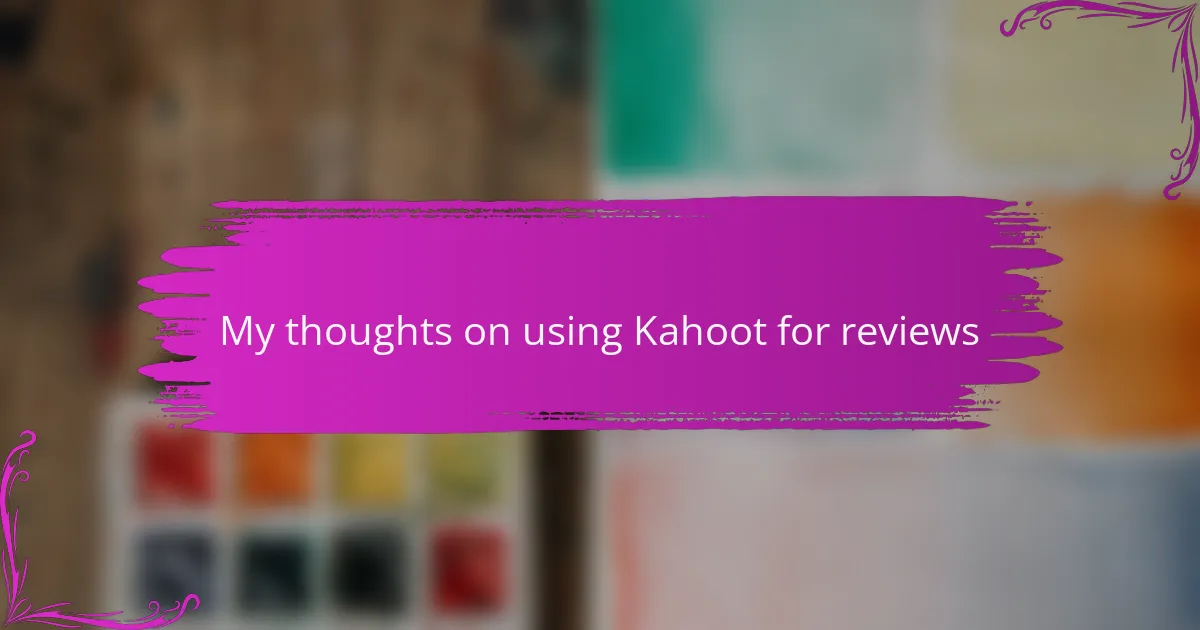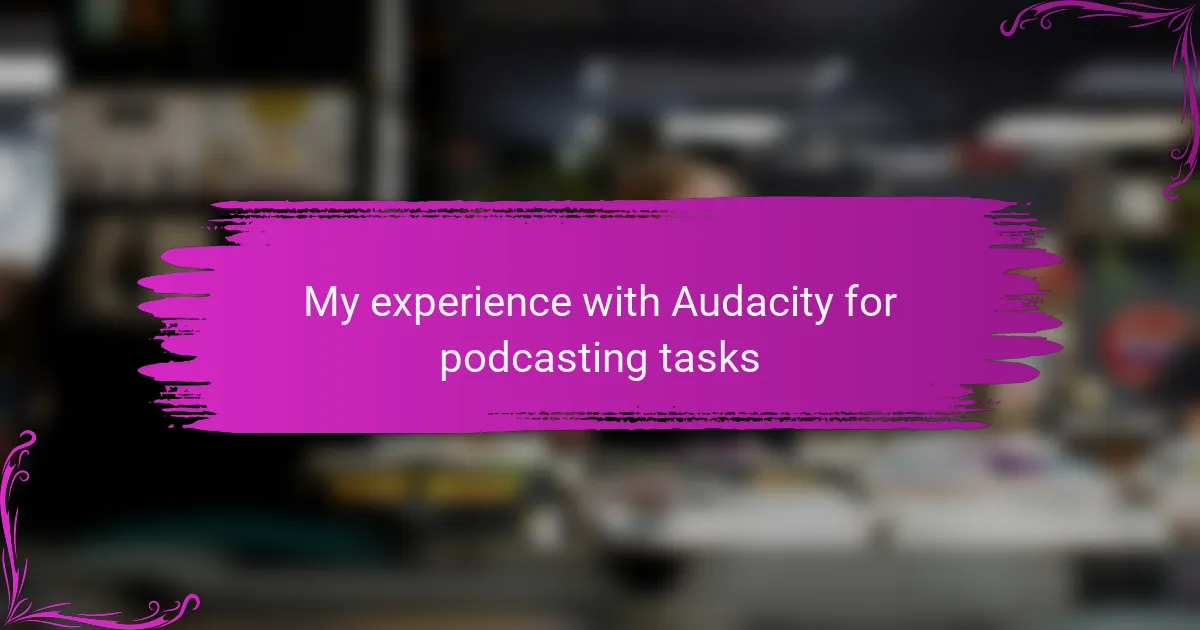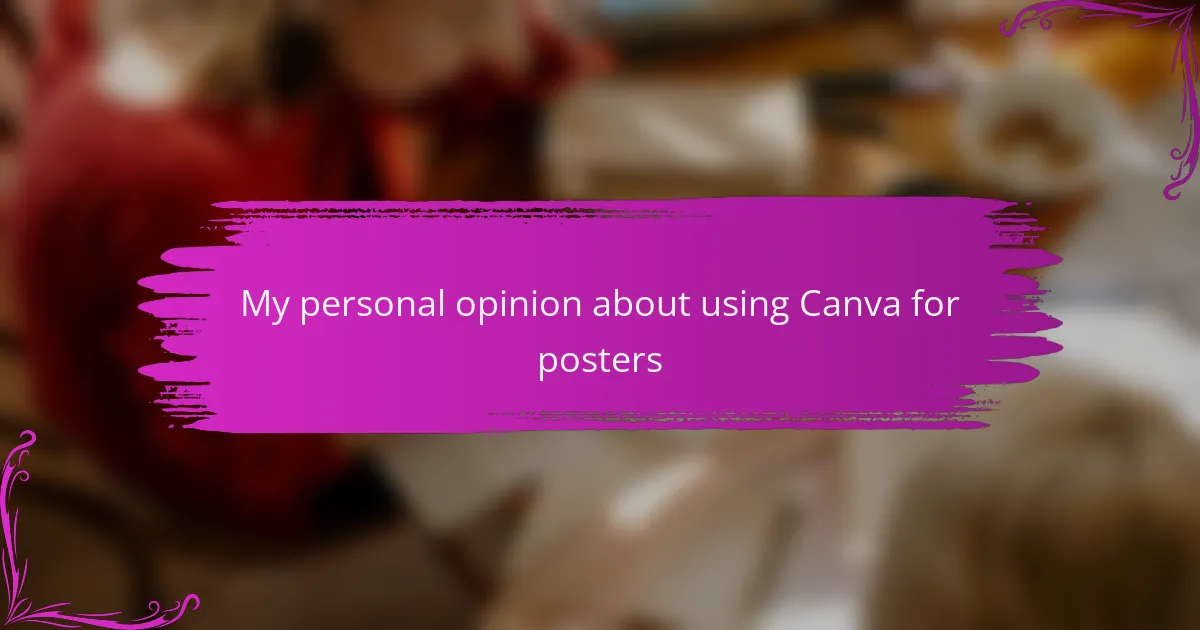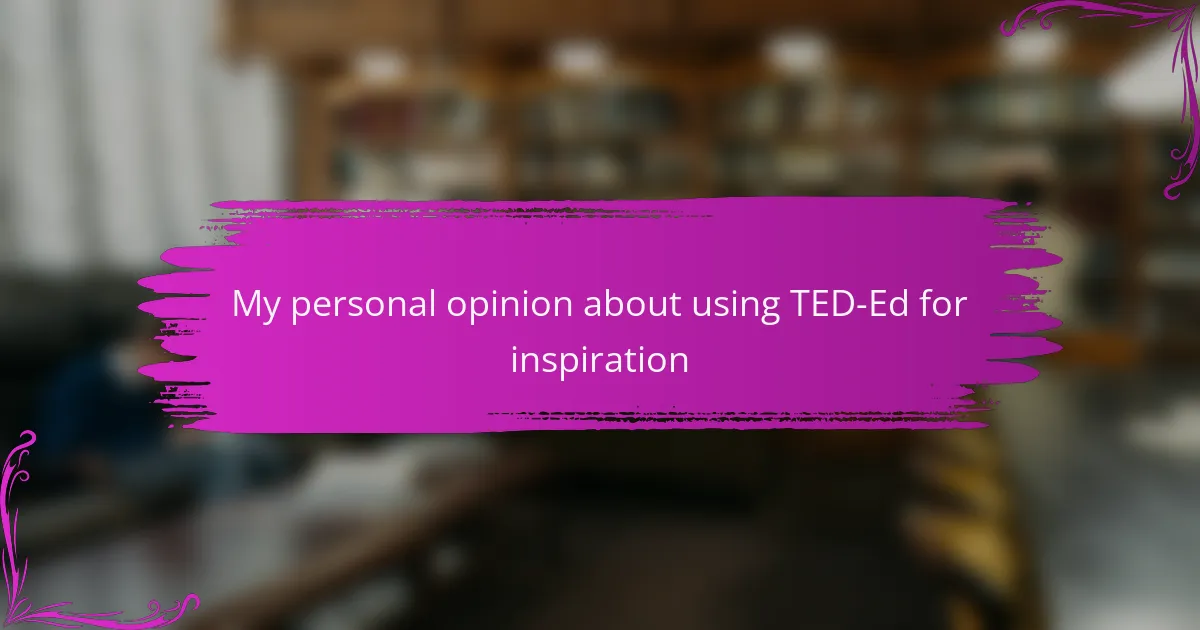Key takeaways
- Kahoot enhances student engagement in literature education through interactive quizzes that foster competition and collaboration.
- Immediate feedback provided by Kahoot allows both students and educators to assess understanding and adjust learning strategies on the spot.
- Creating effective quizzes with clear objectives, varied question difficulties, and relatable visuals is essential for maximizing student participation and learning.
- Incorporating popular literature themes and icebreaker questions can significantly boost student interest and active participation during Kahoot sessions.
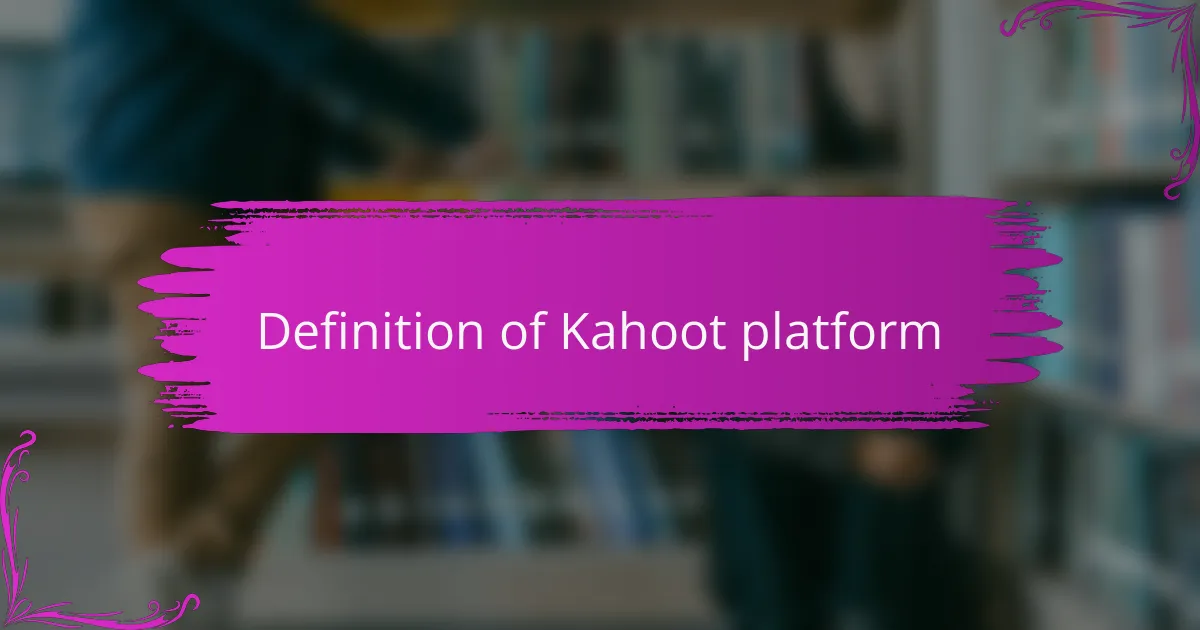
Definition of Kahoot platform
Kahoot is a game-based learning platform designed to make education more interactive and enjoyable. It allows users to create and participate in quizzes, which can be accessed via smartphones, tablets, or computers. I remember the first time I saw students engaged in a Kahoot quiz; their excitement was palpable as they competed for the top scores.
This platform combines fun and learning, enabling teachers to facilitate reviews in a more dynamic way. The user-friendly interface makes it easy to create quizzes that can reflect literature themes or character analyses. Have you ever noticed how a little competition can spark enthusiasm in a classroom? That’s precisely what Kahoot provides—an engaging way for students to connect with the material.
Kahoot fosters collaboration and makes learning feel less like a chore. With various question formats, including multiple choice and poll questions, it caters to different learning preferences. Personally, I’ve seen shy students shine when they can express their thoughts through a playful quiz format, transforming their learning experience into something vibrant and memorable.
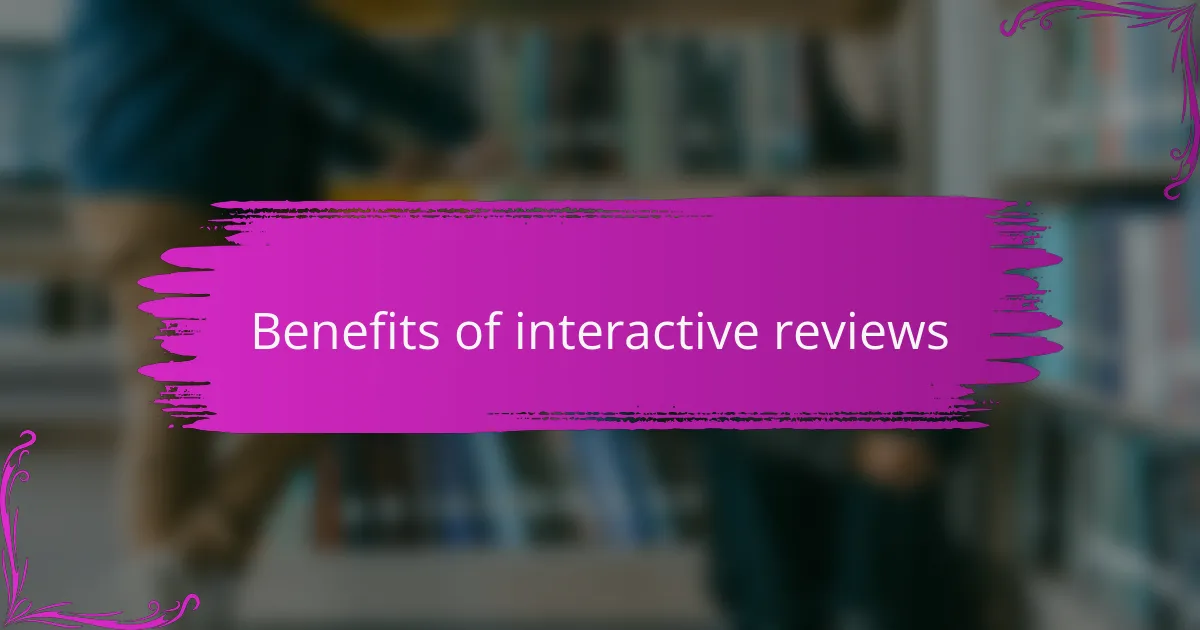
Benefits of interactive reviews
When it comes to literature education, I’ve found that interactive reviews can transform the learning experience. Engaging students in this way not only makes the material more enjoyable but also reinforces their understanding of key concepts. For instance, I remember using Kahoot with a group of high school students who typically dreaded review sessions. The laughter and friendly competition made them more invested in the material, resulting in a noticeable improvement in their retention and enthusiasm.
Moreover, interactive reviews create a dynamic environment that fosters collaboration. Students often share insights and discuss their answers, which deepens their comprehension. I’ve seen firsthand how this back-and-forth dialogue promotes critical thinking, helping students to articulate their thoughts. The excitement as they scramble to answer questions is a sight to behold—it’s like watching a spark ignite their passion for literature.
The benefits of incorporating interactivity into reviews extend beyond just engagement. These sessions can provide immediate feedback to both students and educators, shaping future lessons. I’ve seen students light up when they realize they’ve mastered a concept or are motivated to improve based on the results displayed on-screen.
“`html
| Benefits | Description |
|---|---|
| Increased Engagement | Fosters excitement and enthusiasm during reviews. |
| Immediate Feedback | Allows students and teachers to assess understanding right away. |
| Enhanced Collaboration | Encourages discussion and teamwork among students. |
| Improved Retention | Interactive elements help solidify knowledge for students. |
“`
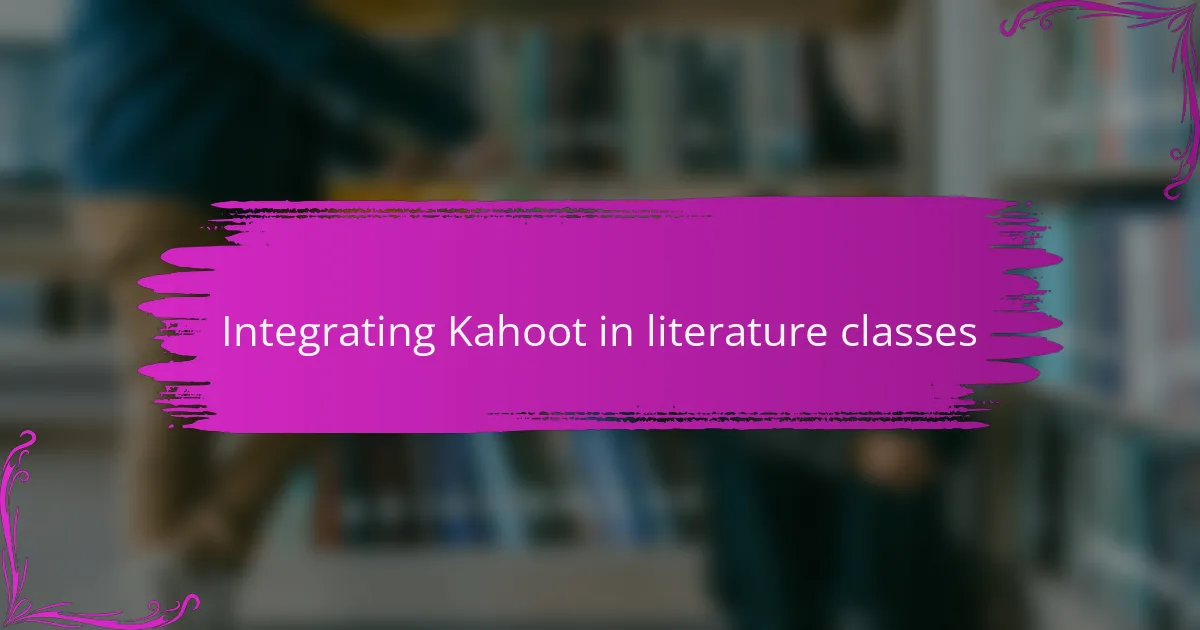
Integrating Kahoot in literature classes
Integrating Kahoot into literature classes creates a unique blend of learning and excitement. I vividly recall a session where we delved into classic novels; the students were immersed in heated debates over character motivations, all while competing in Kahoot. This playful atmosphere sparked curiosity and camaraderie among them, illustrating just how effective this platform can be in making literature relevant and fun.
One of the aspects I appreciate most about using Kahoot is the ability to tailor quizzes around specific texts or themes. It’s fascinating to see students grapple with complex ideas while enjoying the challenge. For example, when reviewing symbolism in a challenging novel, I noticed how students who were usually quiet in class began volunteering their insights, almost as if the game format broke down their barriers. Isn’t it amazing how a simple quiz can ignite participation and enthusiasm in a topic they once found daunting?
Moreover, Kahoot provides an avenue for diverse interactions. From personal reflections on characters to group discussions on plot developments, the platform encourages students to engage not just with the quizzes but also with each other. I find that these moments of discussion often lead to deeper exploration of the literature, where students make connections they might not have otherwise considered. It’s rewarding to witness their growth, as they become more confident in articulating their thoughts and interpretations.
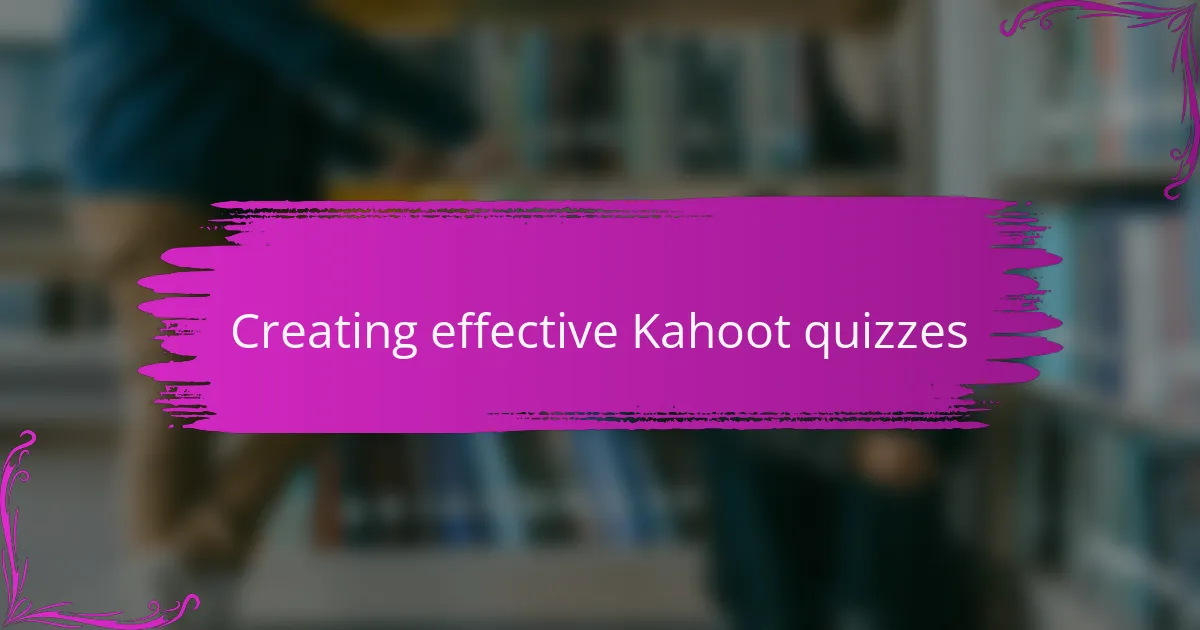
Creating effective Kahoot quizzes
Creating effective Kahoot quizzes involves careful thought and planning. First, I always consider the learning objectives I want to achieve. Tailoring questions to reflect these goals ensures that students are not just having fun, but also engaging with the material in a meaningful way. For instance, I once designed a quiz for a literature class that not only tested knowledge but also prompted discussions about character motivations. The discussions that followed showed me how powerful interactive tools can be.
Moreover, balancing question difficulty is crucial. I’ve found that mixing easier, recall-based questions with more challenging ones encourages all students to participate. This creates an environment where they feel confident yet pushed to think deeper. Ultimately, adding visuals or quotes from the literature can also enhance the experience, making the material even more relatable.
| Effective Quiz Strategies | Impact on Learning |
|---|---|
| Clear Learning Objectives | Focused engagement and understanding of key concepts |
| Varied Question Difficulty | Encourages participation and deeper thinking |
| Incorporation of Visuals | Enhances relatability and interest in the material |
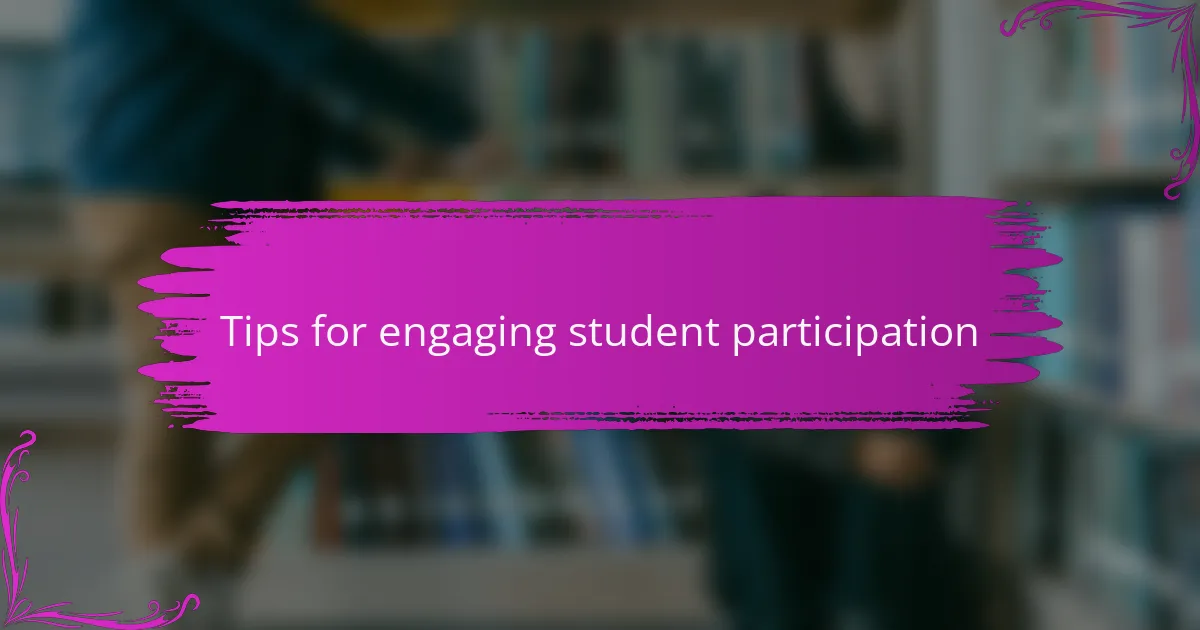
Tips for engaging student participation
To effectively engage students in Kahoot quizzes, I’ve found that incorporating themes from the literature they love makes all the difference. When a quiz relates to familiar characters or plot twists, students feel a connection that sparks their interest. I remember a thrilling session focused on a popular young [censured] novel; students were buzzing with excitement, eagerly racing to answer before their peers.
Timing can also be a game-changer. I’ve noticed that kicking off a quiz with a lively icebreaker question or a controversial quote often gets students talking and sets a friendly, competitive tone. For example, using a thought-provoking line from a novel as a starter question not only jolted their memories but also initiated passionate discussions. It’s fascinating how a well-placed quote can transform students from passive listeners to active participants in no time.
Lastly, offering incentives for participation can ramp up engagement significantly. Simple rewards, like small prizes or even just bragging rights, motivate students to put their best effort forward. I once introduced a leaderboard system that kept students wanting to improve their scores week after week. Seeing their names climb the ranks sparked a surge of enthusiasm, and, honestly, it reminded me how much a little friendly competition can energize the learning environment.
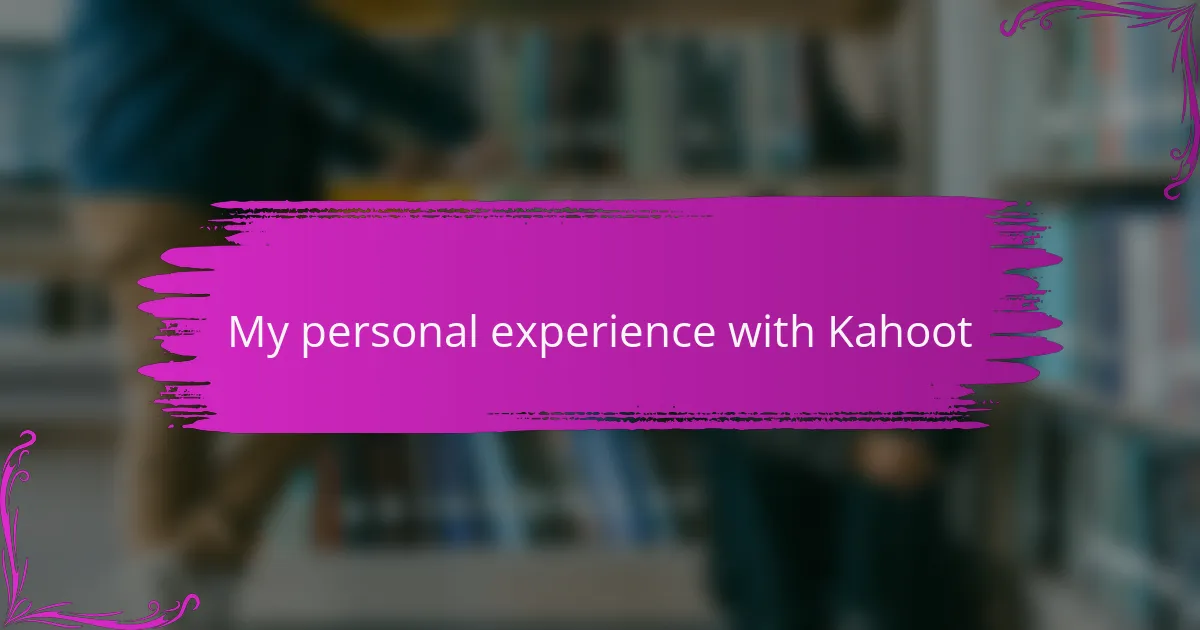
My personal experience with Kahoot
My personal experience with Kahoot has been quite enlightening. I remember the first time I used it in a literature class; the students were buzzing with excitement. The competitive edge fueled their enthusiasm, and I could see them engaging with the content in a way that made learning enjoyable.
Kahoot really transformed the review process for my students. It created an environment where they felt comfortable sharing their thoughts, and the instant feedback kept them motivated. Seeing their faces light up with each correct answer reminded me of the importance of interactive learning in literature education.
Here’s a brief comparison of my experiences with traditional review methods versus using Kahoot:
| Aspect | Traditional Method | Kahoot |
|---|---|---|
| Engagement Level | Low | High |
| Student Interaction | Minimal | Active Participation |
| Immediate Feedback | Delayed | Instant |
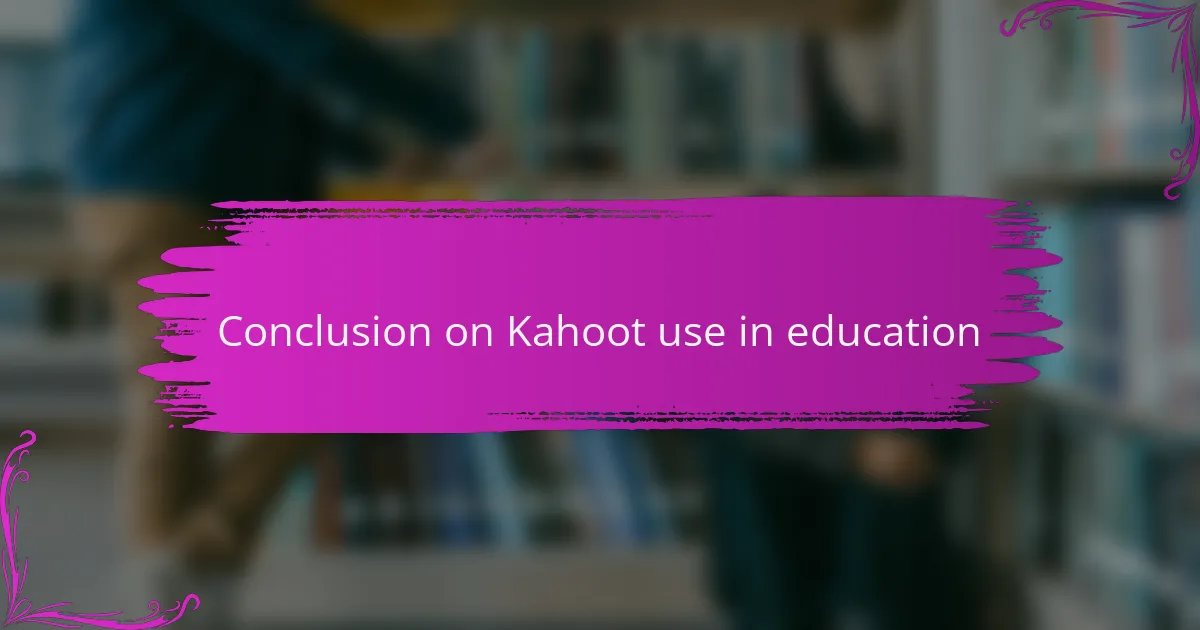
Conclusion on Kahoot use in education
When I reflect on using Kahoot for educational reviews, I find it to be a powerful tool that brings an element of fun to learning. The interactive nature of Kahoot fosters engagement, turning what could feel like a mundane review session into an active and enjoyable experience. I’ve seen students light up when they get to compete against classmates, and that excitement often translates into better retention of the material.
Moreover, Kahoot’s versatility is remarkable. It can be applied in various subjects, including literature, where students can review themes, characters, and plots through carefully crafted questions. I’ve noticed that using such platforms not only boosts student motivation but also encourages healthy competition, which often leads to deeper understanding and collaboration among peers.
In my experiences, the immediate feedback Kahoot provides is invaluable. It allows educators to gauge student understanding in real-time and adjust their teaching methods accordingly. Overall, I believe Kahoot can enhance the learning experience significantly, especially when combined with thoughtful lesson planning.
| Advantages | Disadvantages |
|---|---|
| Engages students through gamification | Requires a reliable internet connection |
| Immediate feedback for educators | Can be distracting if not properly managed |
| Encourages collaboration and discussion | May favor quick responders over deeper thinkers |
